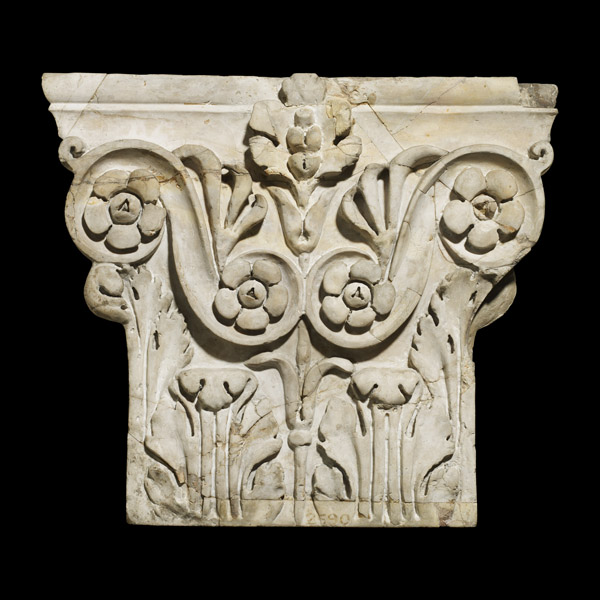The Pantheon, 117-125 CE
The Pantheon (“Temple of All the Gods”) was originally built by Agrippa in 27 BCE, but it was destroyed by fire in 80 CE. It was rebuilt by Hadrian and still stands today in Rome.
These marble capitals come from the interior of the Pantheon, one of the most iconic buildings of ancient Rome. They were originally located at the top of shafts of porphyry – a rare and expensive stone – and decorated the upper area of the round Pantheon, beneath the dome. The walls, and the floor beneath, were covered in colourful marbles and other precious stones.
Literally, a ‘temple to all the gods’, the Pantheon served a number of functions. It appears to have been used for the veneration of emperors and Hadrian is known to have held court there. Its dome is a triumph of Roman engineering. Some of the materials used for its decoration were of staggering richness and were drawn from distant parts of the empire to demonstrate the reach and power of Rome.
Hadrian rebuilt the Pantheon in around AD 125 after a series of fires had destroyed both the original building, first erected by Marcus Agrippa, and the building that had replaced it.
The capitals were removed during a redesign of the Pantheon’s interior in AD 1747. The redesign was an attempt to correct the lack of vertical alignment between the various elements of the rotunda’s wall and ceiling decoration. While the original layout had puzzled architects from the Renaissance onwards, it is now seen as an ingenious way of adding vibrancy and movement to what would otherwise have been a rigidly symmetrical design.
British Museum- Marble pilaster capitals from the Pantheon in Rome
British Museum- Hadrian Empire and Conflict
See also-





